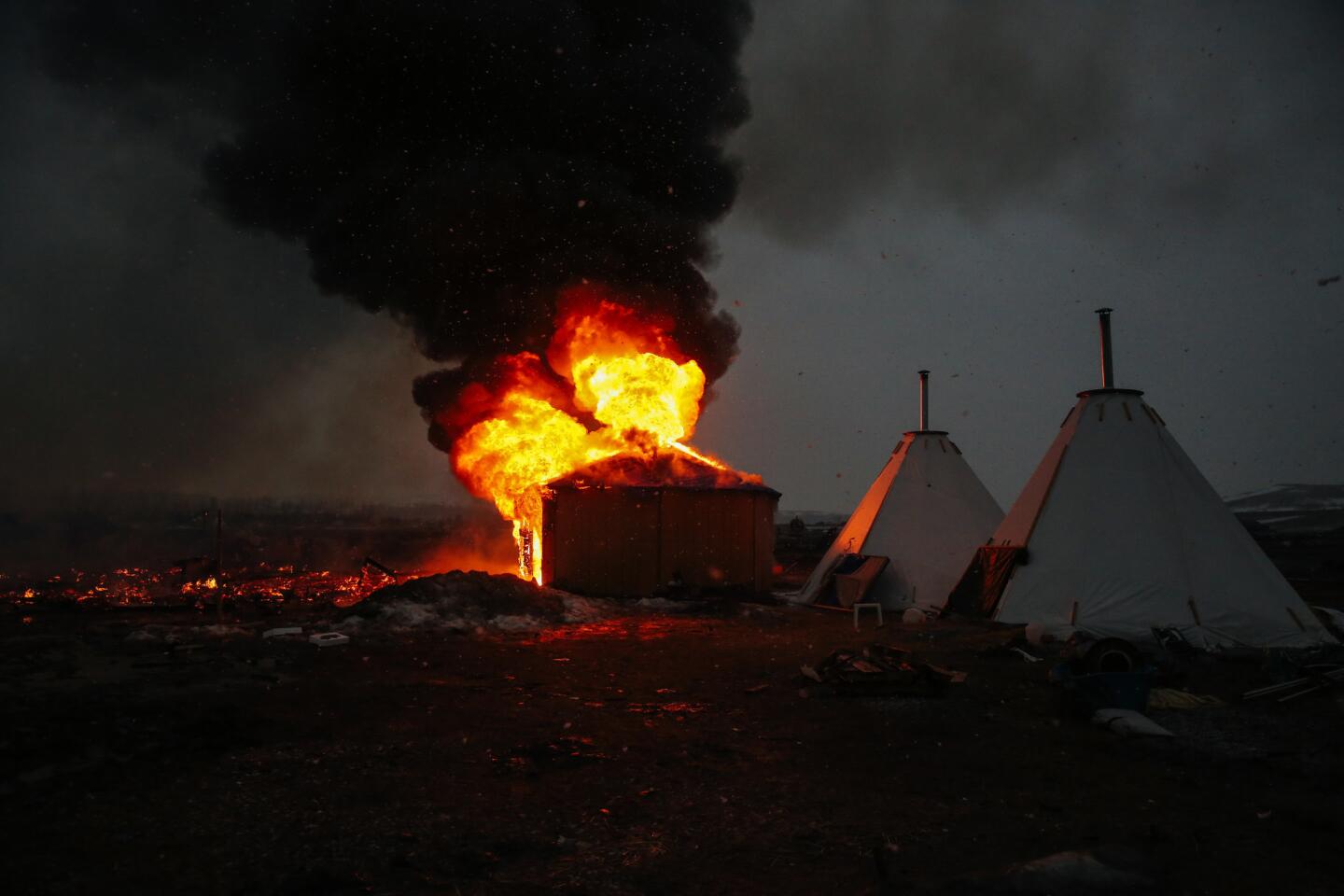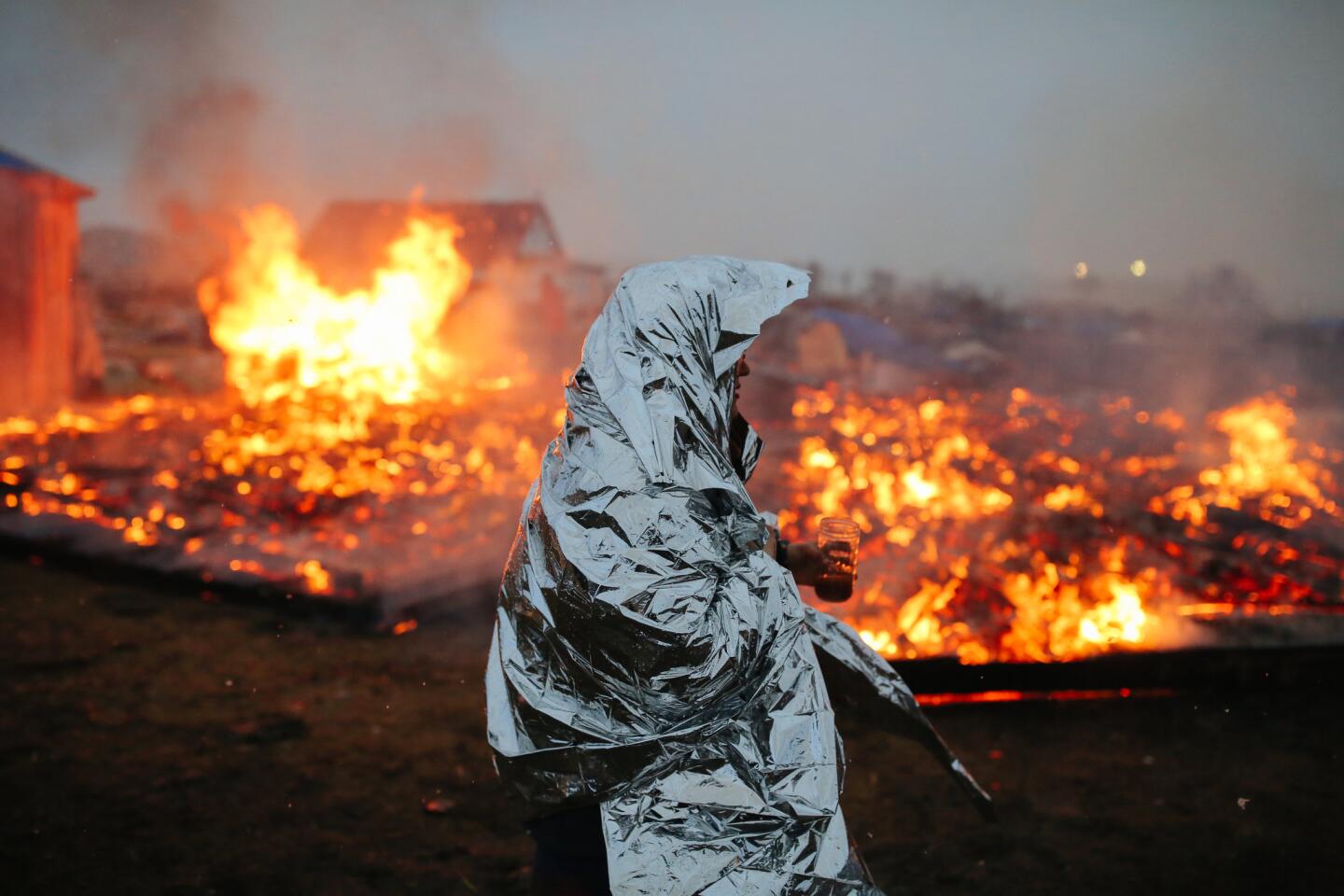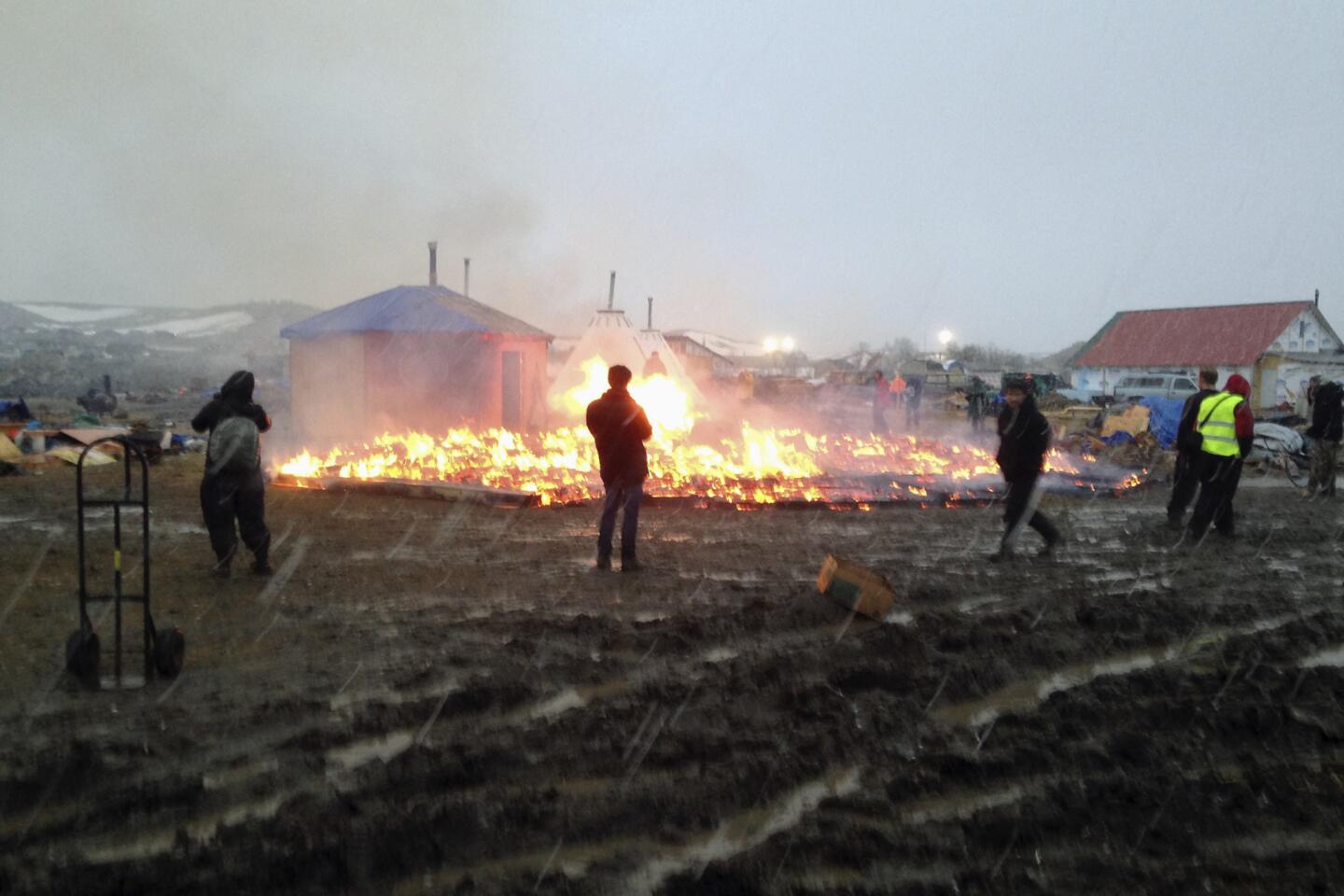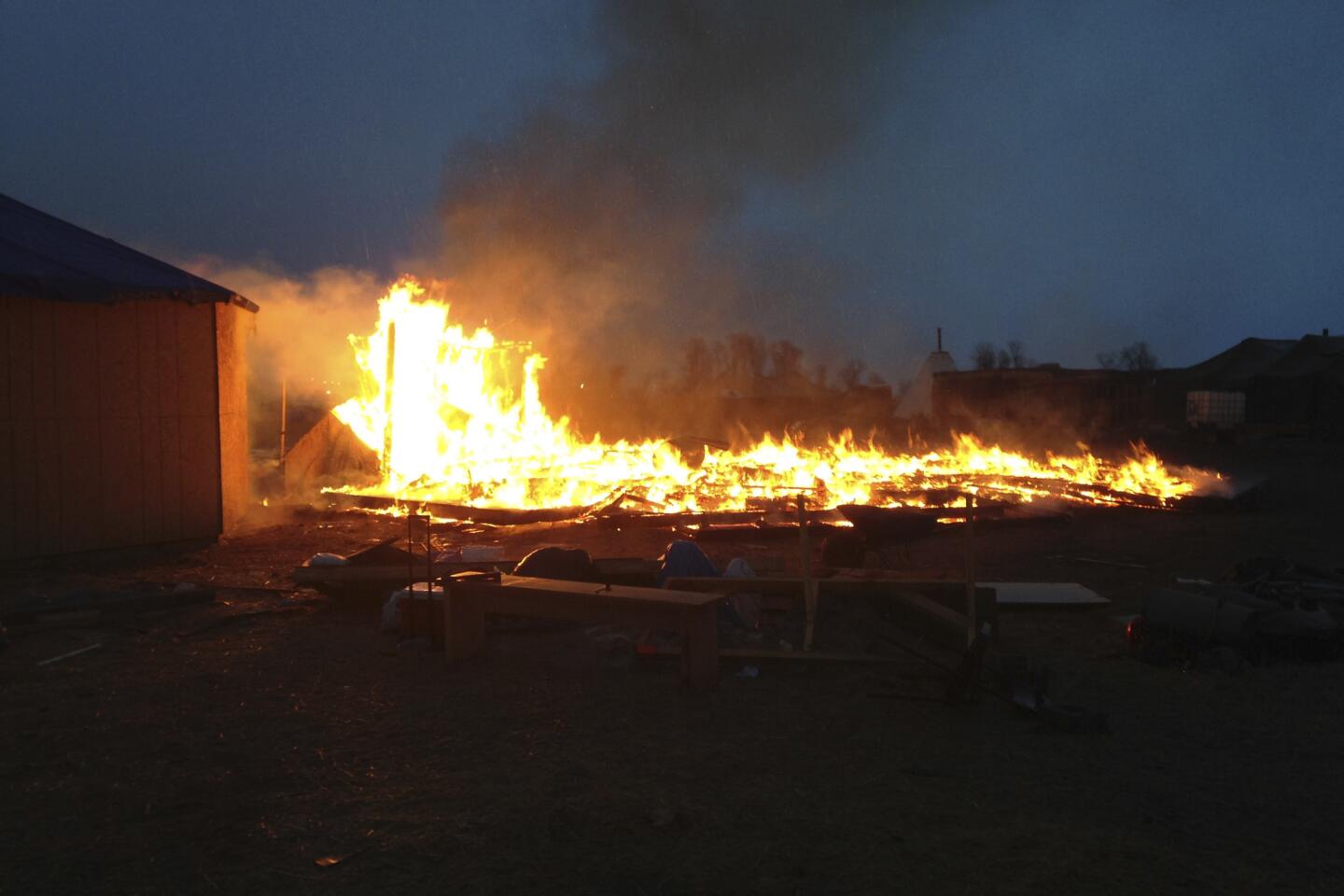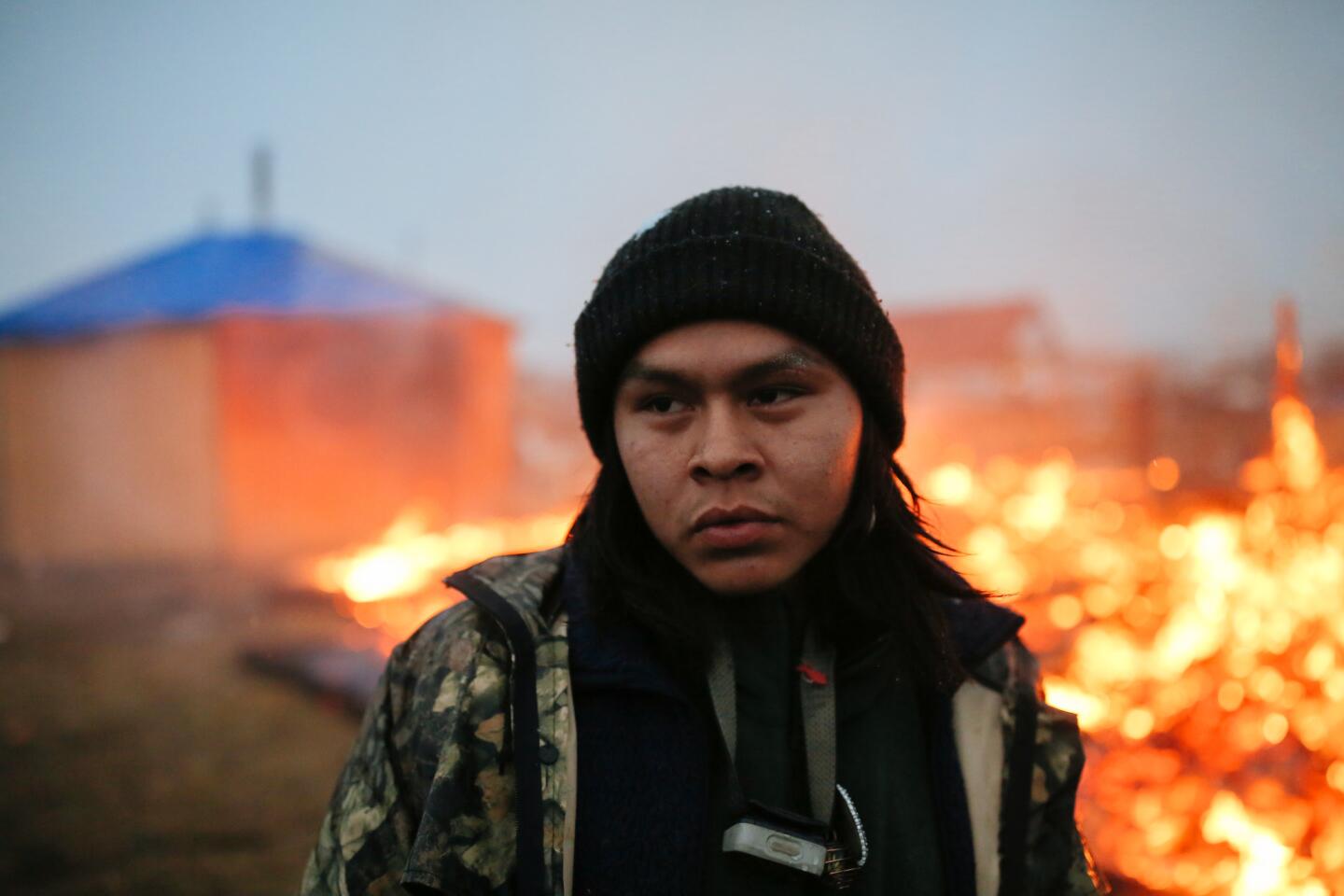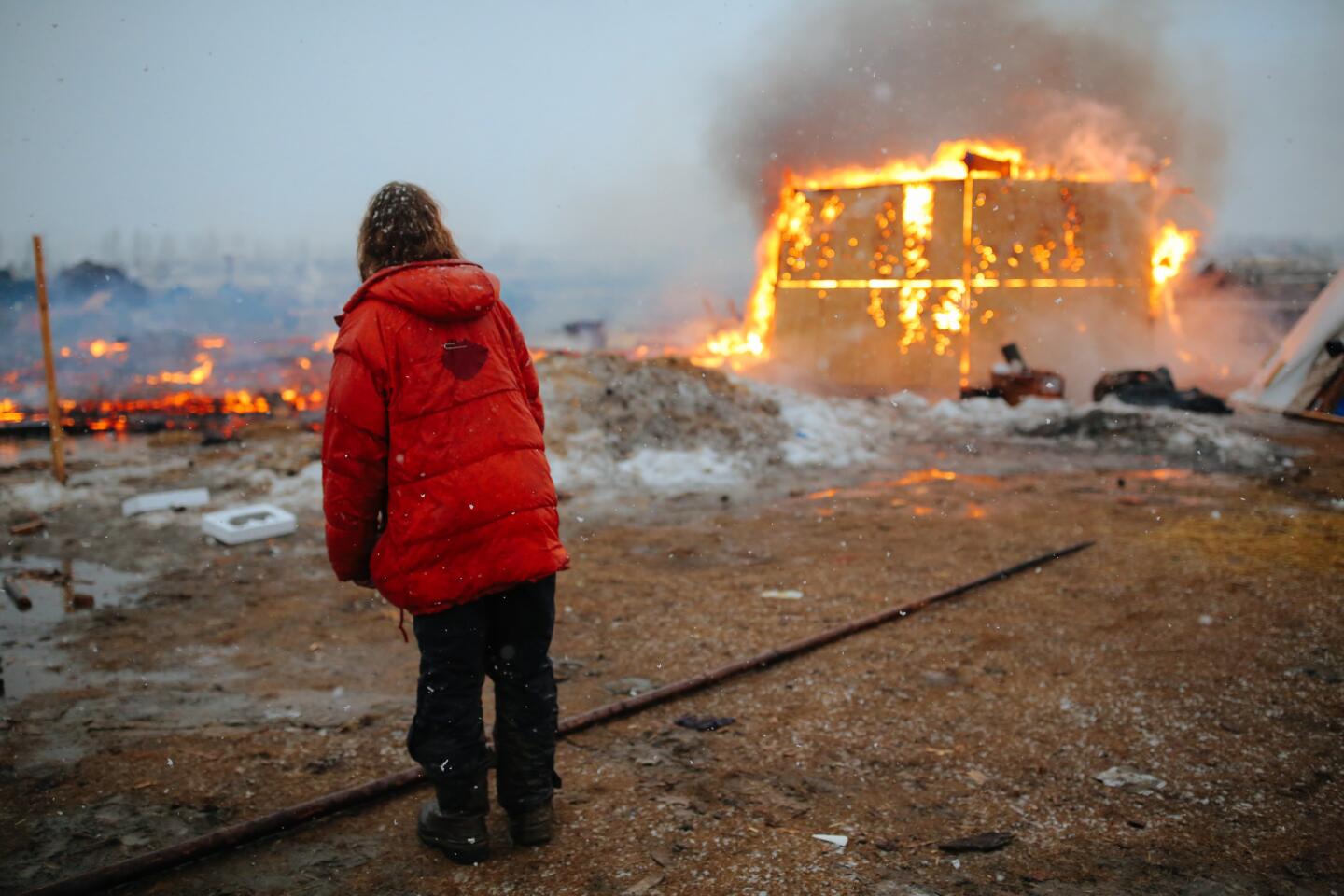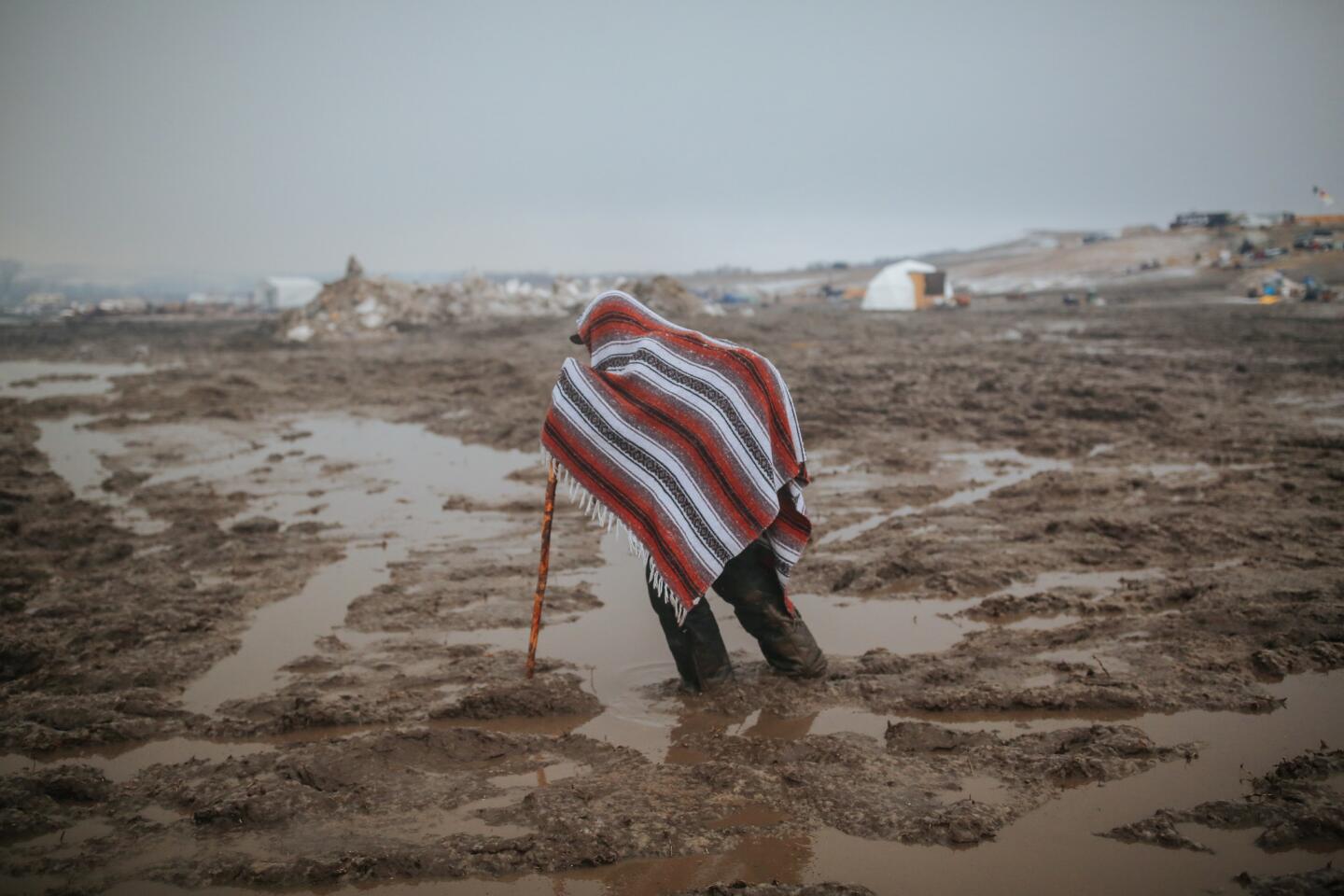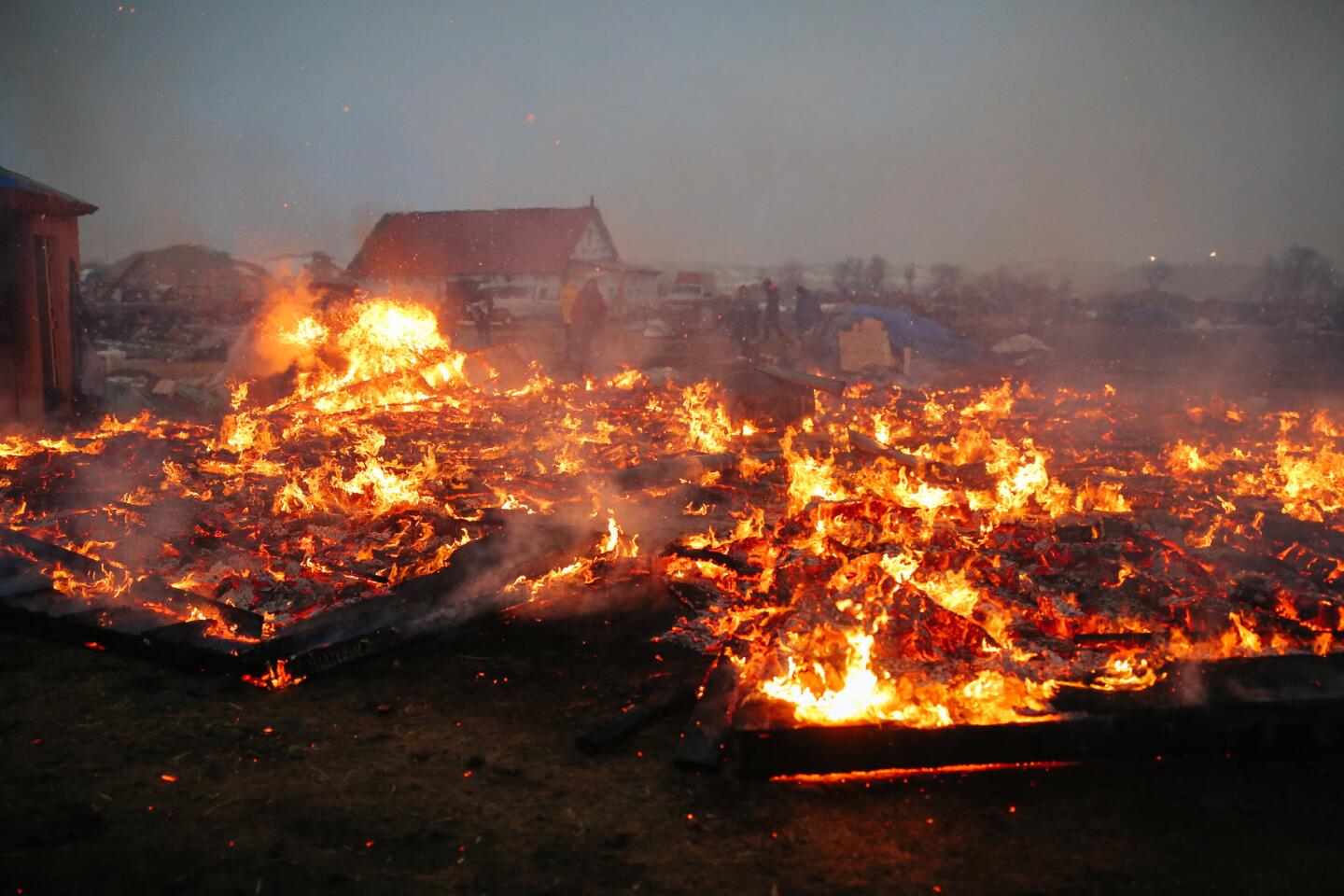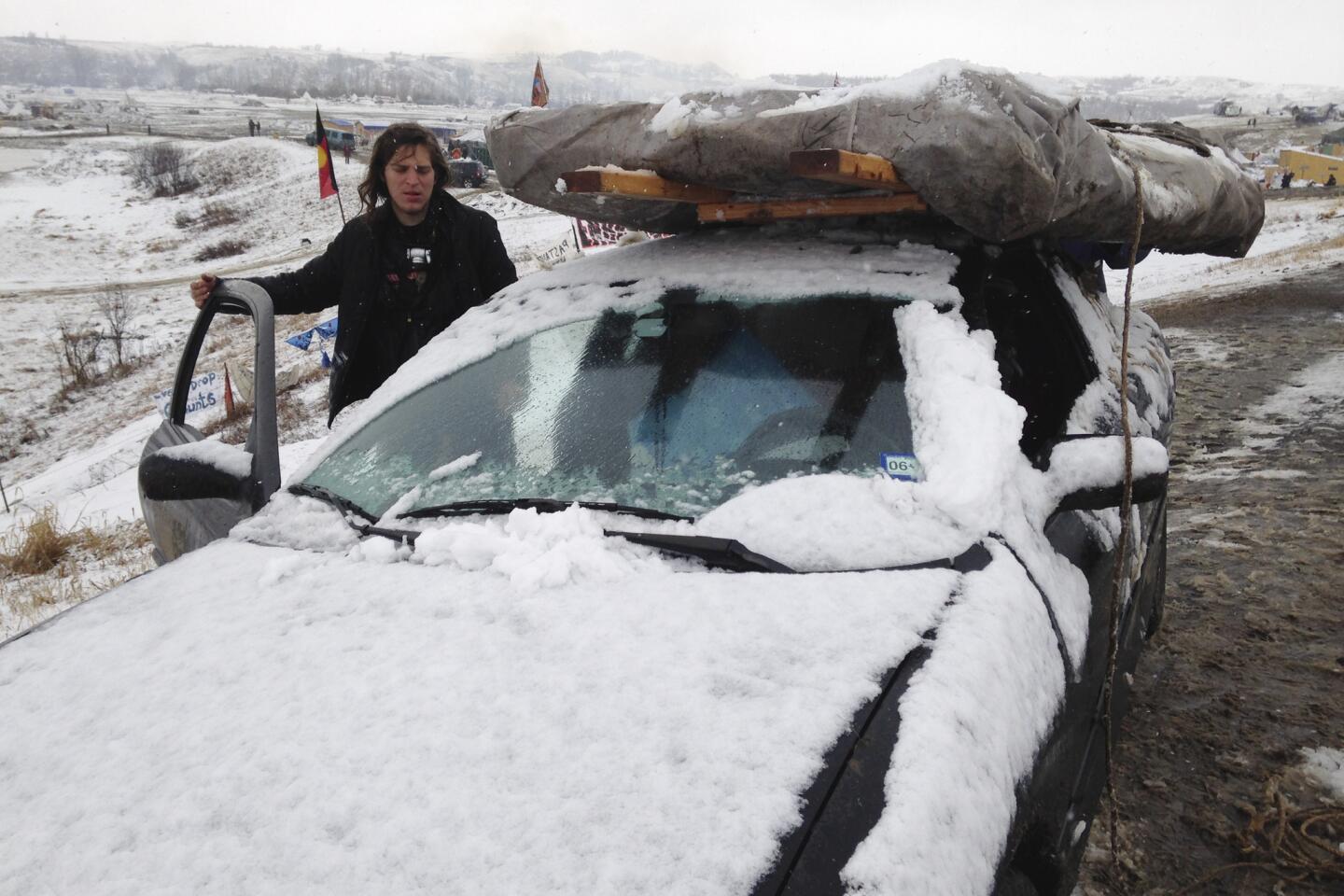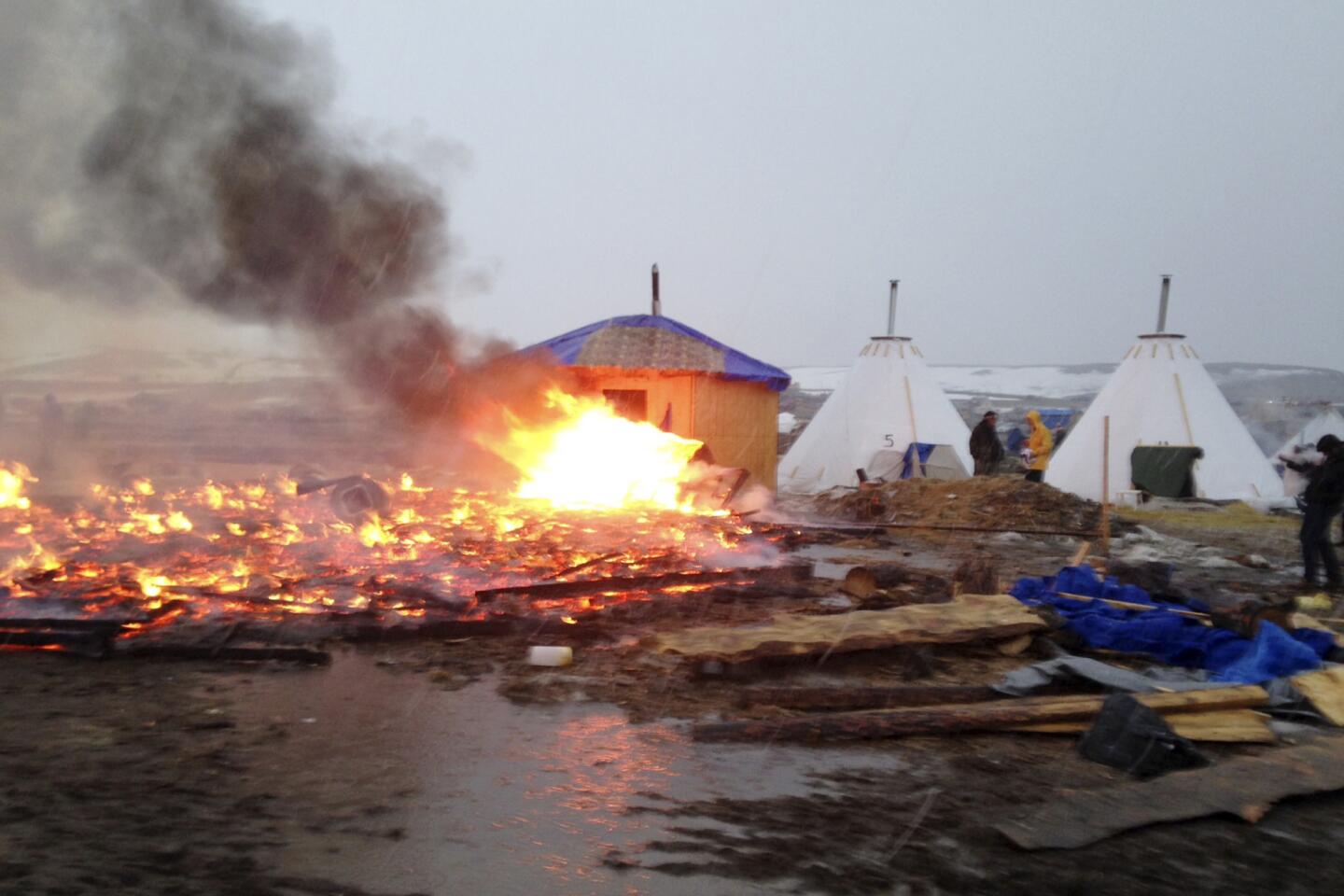10 arrested as authorities close in on Dakota Access pipeline protest camp
As authorities closed in on the Dakota Access pipeline protest Wednesday, a small contingent of resisters refused to leave the site where they’ve stood for almost a year against the construction of the pipeline near the Standing Rock Sioux Reservation.
The standoff marked the culmination of one of the nation’s largest and longest environmental protests, which at its peak drew thousands of activists who said the project would threaten the water supply and sacred sites of the North Dakota tribe.
Police avoided going inside the camp, but by the end of the day officers had arrested 10 people near its outer edge, North Dakota Gov. Doug Burgum said.
“We’ve been very clear that we wanted them to leave,” Burgum told reporters at a news conference Wednesday evening. “To be arrested today, you had to be really trying to get it done.”
Burgum decried the conditions at the camp, noting the shoddy cellphone service, risk of flooding, lack of access to medical care, and the pile-up of garbage and human waste.
“This is not a place where people should be living,” he said.
Two people were hurt after structures were ceremonially set on fire inside the camp. Burgum said a 17-year-old girl was “severely” burned and airlifted for treatment, and a 7-year-old boy was also injured.
Last week, Burgum signed an emergency evacuation order, citing rising water levels and an increased risk of ice jams as a safety issue that required the camp to be cleared.
The U.S. Army Corps of Engineers planned to close the Oceti Sakowin campsite Wednesday, giving protesters until 2 p.m. to evacuate.
About two hours later, roughly 30 protesters told police they wanted to be “ceremonially” arrested, according to Morton County Sheriff’s Department spokeswoman Maxine Herr. Authorities arrested at least one person before the group took off running and yelling, she said.
“I don’t know if they had second thoughts, or we scared them,” Herr said. “It didn’t work like they had planned.”
Most of those living at the camp left voluntarily, with many boarding state-funded buses to get access to hygiene kits, food and hotels.
The federal Bureau of Indian Affairs set up a checkpoint on the south side of the Cannonball Bridge to prevent people from entering the camp, though people were allowed to leave.
Among those leaving was Linda Black Elk, who has called the camp home since April. Passing through the checkpoint Wednesday, she said she saw hundreds of law enforcement officers surrounding the site.
“They are removing indigenous people from indigenous land. This was treaty land. It was never given up, it was never purchased. It was stolen,” she said. “It’s wrong to forcibly evict people — again — from their land.”
Several hours after the deadline, Burgum estimated that between 25 and 50 people remained in the camp.
“They intend to hold the space as long as they can,” said Eryn Wise of the International Indigenous Youth Council. “All of them are going to be out there fighting to hold their land.”
Hours earlier, hundreds of protesters voluntarily marched off the land — praying, singing and beating drums — in anticipation of the forced evacuation.
As they left, some burned their belongings, a tradition to signify a tremendous change in their lives, said Dallas Goldtooth, a national organizer with the Indigenous Environmental Network.
Authorities planned to enter the camp Thursday morning to continue cleaning up. Anyone who obstructs those efforts will be subject to arrest, Burgum said.
The protest camp is on federal land in southern North Dakota between the Standing Rock Sioux Reservation and the oil pipeline route.
For almost a year, Native American tribes, along with environmental activists, have stood in the path of the pipeline.
Demonstrations began in April with a few people praying in a camp on the reservation, and grew at times to include hundreds, sometimes thousands, of activists. The Standing Rock Sioux Tribe has opposed the construction of the Dakota Access pipeline since it was first proposed in 2014.
Construction was halted in December under the Obama administration, but has been allowed to resume under President Trump.
The pipeline, at 30 inches in diameter and planned to stretch across 1,172 miles, would carry hundreds of thousands of barrels of crude oil a day through 50 counties in four states — from western North Dakota through South Dakota and Iowa, ultimately connecting to an existing pipeline in Patoka, Ill.
The pipeline would travel under a dammed stretch of the Missouri River that borders the Sioux reservation in North Dakota. Native American groups say the construction would desecrate sacred sites and could ruin the reservation’s drinking water supply.
As Black Elk left the camp on Wednesday, she said she felt disappointed, but hopeful.
“As indigenous people in the U.S., we’re sort of invisible,” she said. “This has really brought our issues to the forefront, and the people, the world, can see us again.”
ALSO
Senator says Army Corps has been told to approve Dakota pipeline easement
Veterans came to North Dakota to protest a pipeline. But they also found healing and forgiveness
Here’s everything Donald Trump has tweeted since he became president
Native American tribe files legal challenge to stall Dakota Access pipeline
UPDATES:
7:05 p.m.: Updated with the governor’s statements at a news conference.
3:50 p.m.: Updated with one arrest, more protesters leaving, quotes from sheriff’s spokeswoman and demonstrator.
1:25 p.m.: Updates throughout with staff reporting.
The story was originally posted at 5 a.m.
More to Read
Sign up for Essential California
The most important California stories and recommendations in your inbox every morning.
You may occasionally receive promotional content from the Los Angeles Times.
